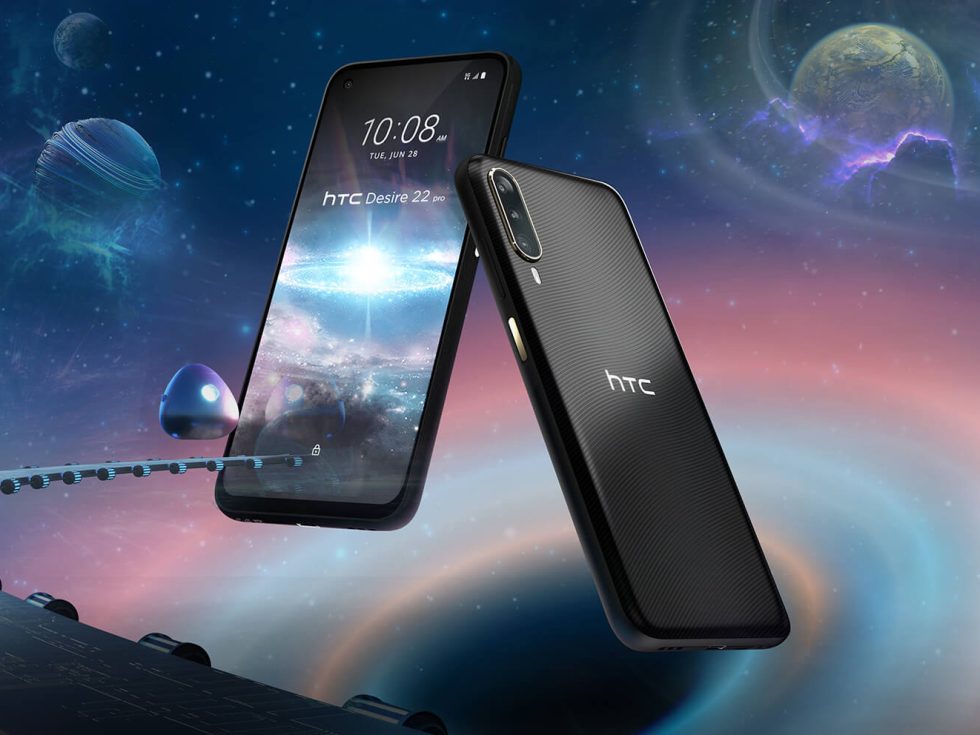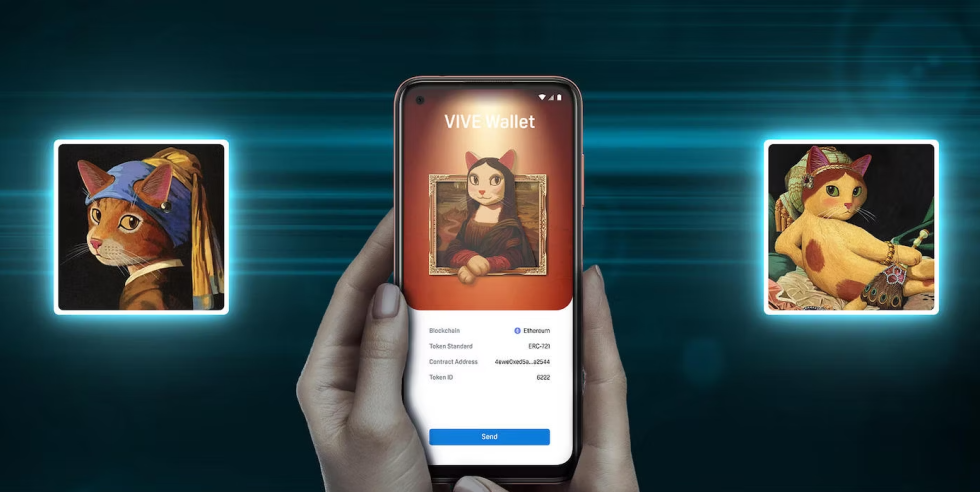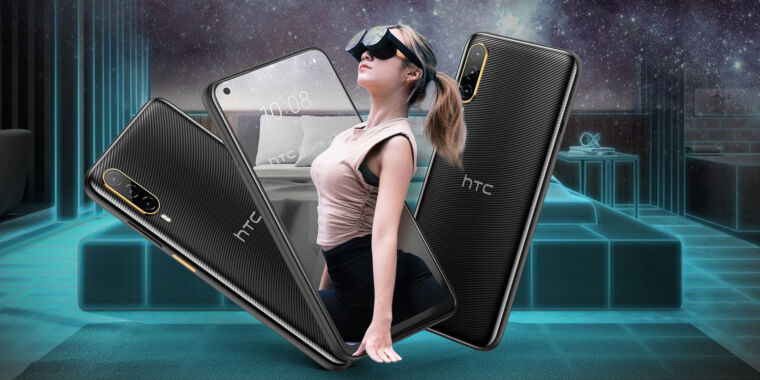HTC
HTC is somehow still making smartphones. The latest from the company is the HTC Desire 22 Pro, a 399 British pound (~$486) mid-ranger that represents the company’s first smartphone of 2022.
HTC says this phone will somehow help you “enter the metaverse,” as “the phone to carry you into the future.” The metaverse is the latest tech buzzword companies have been hyping up. It’s roughly used to mean “VR-related.” The phone itself does not seem to have any actual VR features. HTC’s latest VR goggles, the Vive Flow, use an Android phone as the controller and can show the phone screen inside the VR environment. This phone comes with that Vive Flow controller app, but you can install it on any Android phone that supports miracast and get the same features.
Presumably the buzzword gimmicks are meant as a distraction from the fact that the HTC Desire 22 Pro is a generic-looking mid-range phone. It has a Snapdragon 695, a 120 Hz, 6.6-inch, 2412×1080 LCD, 8GB of RAM, 128GB of storage, and a 4520 mAh battery. It has Android 12, a fingerprint reader, wireless charging, a microSD slot, and an IP67 water-resistance rating, which HTC only describes as “splash proof.” For cameras, you have a 65 MP main camera, a 13 MP ultrawide, 5 MP depth sensor, and 32 MP front camera. HTC’s spec sheet curiously also lists “Face ID” as a feature, which is an Apple trademark. HTC probably means generic face recognition.

HTC
HTC’s buzzword-driven product development
HTC’s rather disjointed strategy is what I’m going to call “buzzword product development.” The company latches on to whatever the latest tech buzzword is and vaguely touts it as a feature that will change everything, only to discard the idea a year or two later. In 2014, the company’s hot new fling was the “Internet of Things,” which it interpreted as a camera with no viewfinder and a fitness band that never launched. In 2015, a new obsession with VR brought HTC’s only successful new product line, the HTC Vive, though you could attribute Most of that success to the involvement of PC gaming juggernaut Valve. (Valve discarded HTC for its second headset, and now HTC seems to have quit the PC-VR market.) Next the company was very excited about “5G,” so its next big product was a 5G hotspot that cost a whopping $600, thanks mostly to being a full flagship Android device in the unpocketable form factor of a smart display.
later, what’s left of HTC’s smartphone division has brought this rudderless buzzword product strategy to smartphones. In 2017, the company touted AI and machine learning As the future, promising the HTC U Ultra would lead to a total “transformation” of the company. 2019 brought the HTC Exodus, a “Blockchain Phone” that could run a full Bitcoin node, a wildly inappropriate use-case for a battery-powered, slow, storage-limited mobile device. Now we’ve got the Metaverse phone, and by the way, the company has already signaled its next fling will be with Augmented reality.
We always ask the same questions of this smartphone-buzzword gimmick: How does this make the phone better? Why would anyone want this? Why is this a selling point over your competitors? HTC never has satisfactory answers. To the extent that these phones actually do anything related to their marketing buzzwords, the integration is usually just a piece of included software—an app that you could just as easily install on a better phone from a serious manufacturer. It’s the same story for this metaverse phone, which is just preinstalled with the available-to-anyone HTC Vive app.

HTC
Oh, by the way, we’ve got one more buzzword for you: NFTs, which this phone also has, of course. HTC actually launched the “Vive Arts NFT store” a few months ago, and this phone has an app for it called the Vive Wallet. Most invocations of “NFTs” involve a pyramid scheme where people buy URLs of bad artwork for absurd amounts of money. HTC describes its NFT store as “designed” for the arts and culture,” and in this case, it showed someone viewing a picture of a Cat Mona Lisa from their smartphone.
So far, the only confirmed countries for availability seem to be the UK and Taiwan. In the UK, the HTC Desire 22 Pro is up for preorder now and will ship August 1.

